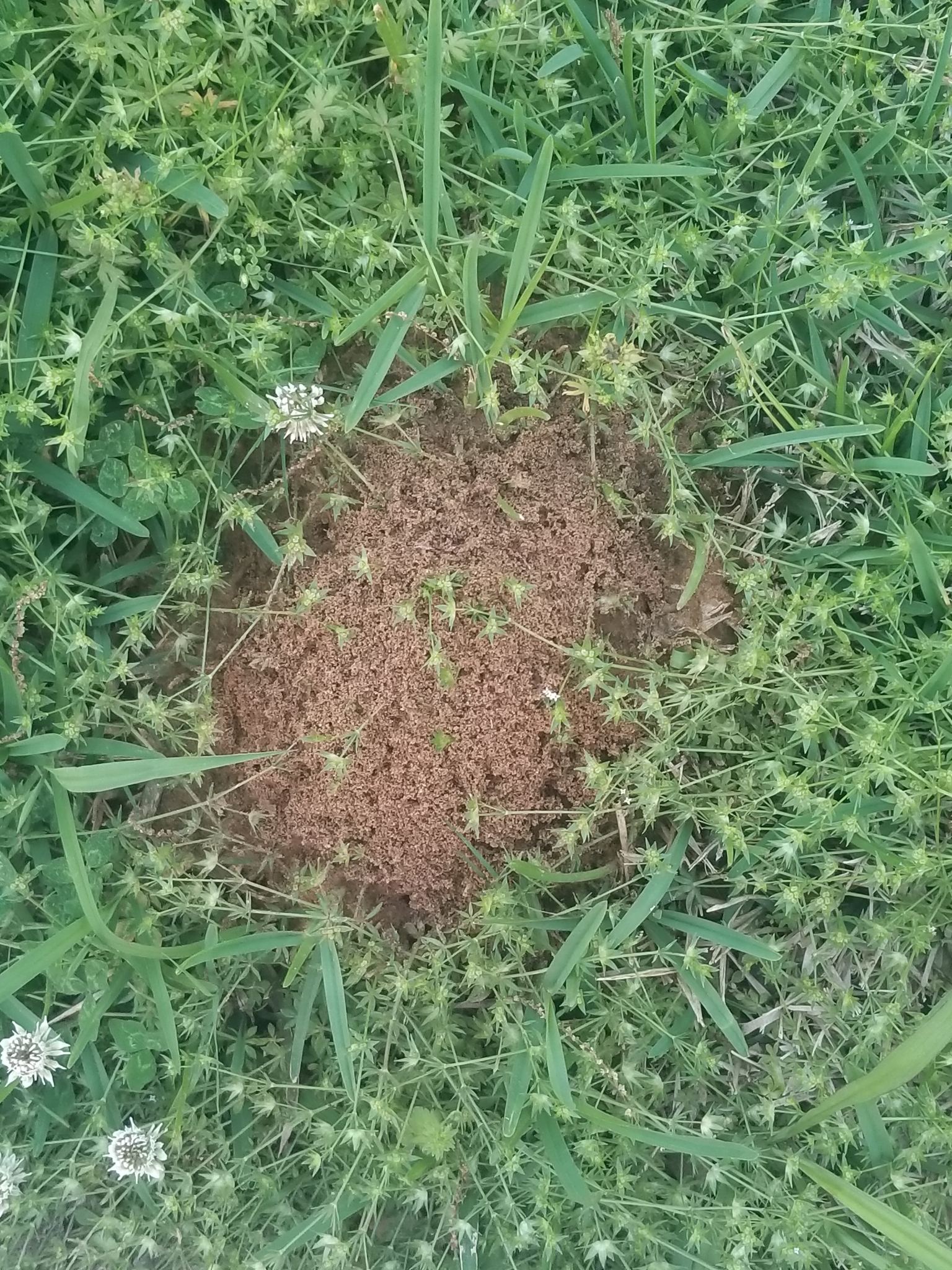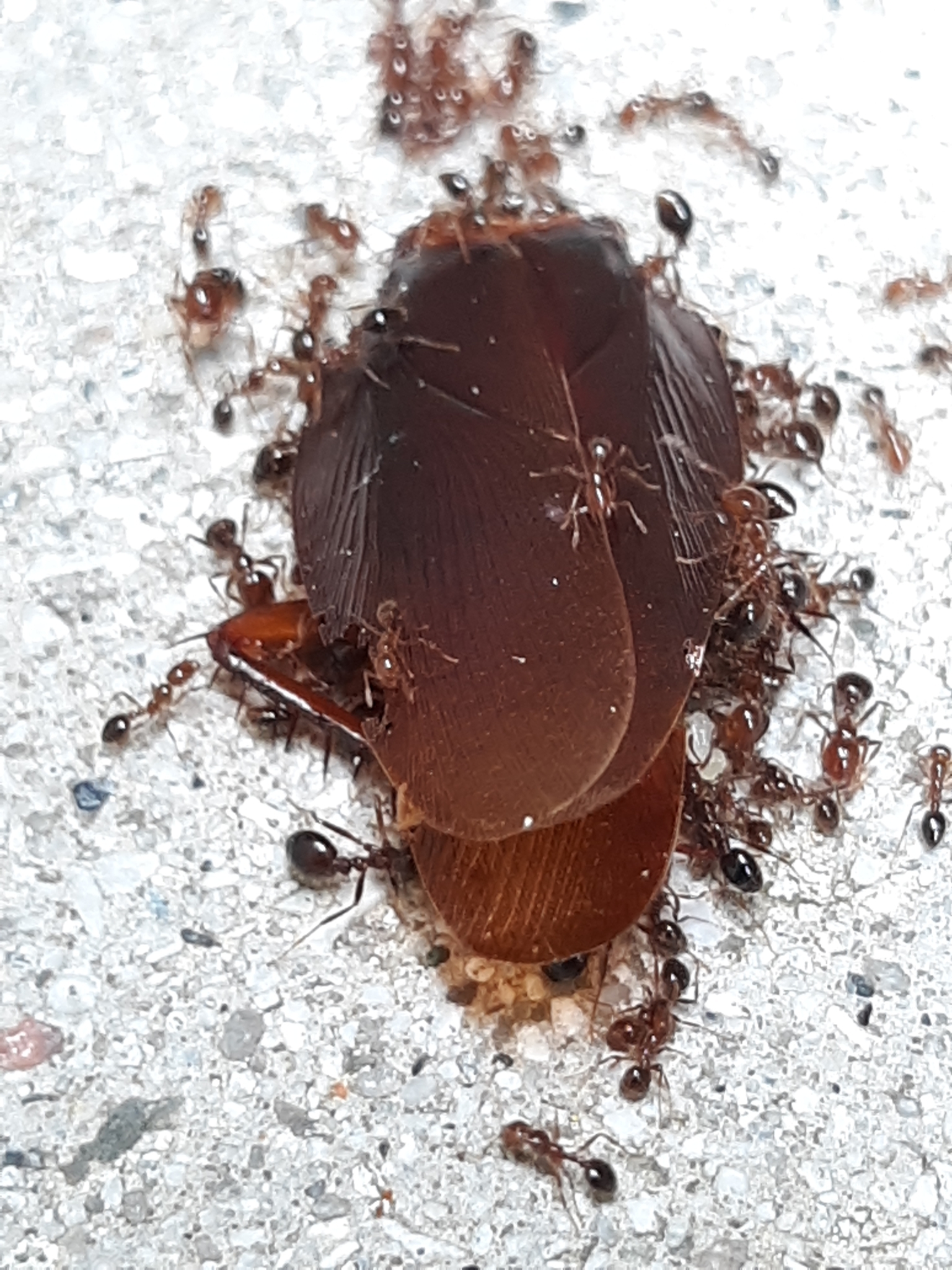by Piter Kehoma Boll
While most species presented here have very little available information about their ecology, today’s species is a very well researched organism because it is a worldwide threat. Its current accepted binomial name is Solenopsis invicta and its common name in English is often red imported fire ant. But why?
The red imported fire ant is native from central regions of South America, including western Brazil, northern Argentina, Paraguay, Bolivia and southeastern Peru. The workers range from about 2.5 to 6 mm in length and have a reddish brown or yellowish color, with a darker abdomen. Some colonies may have two castes of workers, a smaller and a larger one, while others have only one.

Mating occurs during the warmer months, when the typical nuptial flight of ants occur. Males die after mating and queens start to build their nest, sometimes alone, sometimes in groups. Thus, colonies can have a single or multiple queens, and in the latter case they may fight for dominance. The nests are built in the ground and the soil that is displaced to excavate the nest is often deposited around the nest entrance, forming a mound of small grains.

The red imported fire ant is omnivorous and mainly a scavenger, feeding especially on dead animals and sweet liquids such as nectar and honeydew, the sweet substance secreted by some insects. As a predator it may attack other insects, especially dipterans and termites, but also other arthropods, such as spiders and harvestmen, and even snails or small vertebrates. Seeds are also eventually included in their diet.

The behavior of these ants is very complex and they are very resilient, being able to adapt to both drought and flooding conditions. For example, when the soil gets covered by water, they link together and form a ball or raft that floats.
Due to its broad diet and ability to live in several habitat types, including forests and open areas, the red imported fire ant adapts very easily to new areas, and this is exactly what happened.
The red imported fire ant arrived in the United States through the seaport of Mobile, Alabama, by cargo ship, in the 1930s or 1940s and the estimations are that about 9 to 20 unrelated queens were introduced during this time. During the next decades the colonies started to spread across the southern United States and Northern Mexico, causing serious environmental and economic damage.

Studies have shown that many native arthropods disappear from an area when the red imported fire ants arrive. Some of them become prey of the ants and others are likely displaced by competition or because the ants remove their food source. For humans, the economic impact is mostly related to their presence in plantations, where they may remove germinating seeds. If nests are built near or under roads, pavements or buildings, the soil that is displaced can eventually damage the foundations of the structure. In human-inhabited areas they can be a nuisance because of their aggressive behavior, which makes outside activities difficult.
When threatened, fire ants react with an aggressive attack in which several workers approach the threat and sting it. Their venom is formed by a mix of many compounds and, in humans, often cause a burning sensation followed by urticaria and pustule formation. Allergic people may suffer serious and life-threatening allergic reactions.
More recently, the red imported fire ant’s invasion continued and it reached the Caribbean, China, Taiwan, Australia and New Zealand. There are also non-confirmed reports of its occurrence in India and the Philippines.
Due to this combination of factors, the red imported fire ant is one more species in the list of the top 100 invasive species in the world, just like the Giant African Snail and the New Guinea Flatworm, which I presented some weeks ago.
I have to say that I find it funny to see that their presence in gardens is a problem for outside activities in the USA. As a Brazilian I spend my whole childhood playing in a backyard full of fire ants and lost count of how many times I accidentally stepped onto a nest and ended up with my foot covered by stings. Ye goode olde times.
– – –
– – –
References:
Ascunce, M. S., Yang, C. C., Oakey, J., Calcaterra, L., Wu, W. J., Shih, C. J., … & Shoemaker, D. (2011). Global invasion history of the fire ant Solenopsis invicta. Science, 331(6020), 1066-1068. https://science.sciencemag.org/content/331/6020/1066.full
Morrison, L. W. (2002). Long‐term impacts of an arthropod‐community invasion by the imported fire ant, Solenopsis invicta. Ecology, 83(8), 2337-2345. https://doi.org/10.1890/0012-9658(2002)083[2337:LTIOAA]2.0.CO;2
Morrison, L. W., Porter, S. D., Daniels, E., & Korzukhin, M. D. (2004). Potential global range expansion of the invasive fire ant, Solenopsis invicta. Biological invasions, 6(2), 183-191. https://doi.org/10.1023/B:BINV.0000022135.96042.90
Wikipedia. Red Imported Fire Ant. Available at < https://en.wikipedia.org/wiki/Red_imported_fire_ant >. Access on 15 April 2021.
– – –
* This work is licensed under a Creative Commons Attribution-ShareAlike 4.0 International License.
This work is licensed under a Creative Commons Attribution-ShareAlike 4.0 International License.
** This work is licensed under a Creative Commons Attribution-NonCommercial 4.0 International License.
This work is licensed under a Creative Commons Attribution-NonCommercial 4.0 International License.
